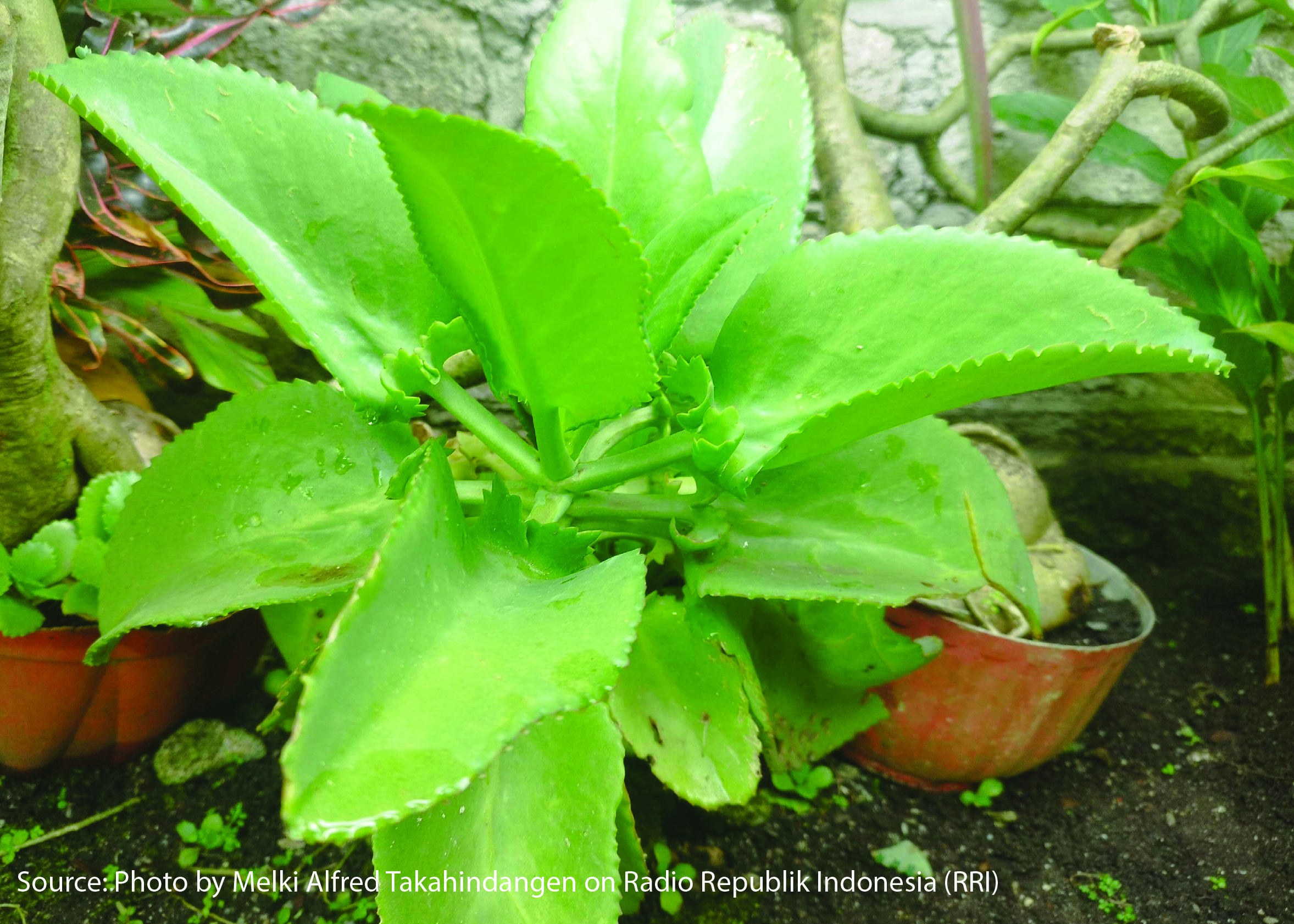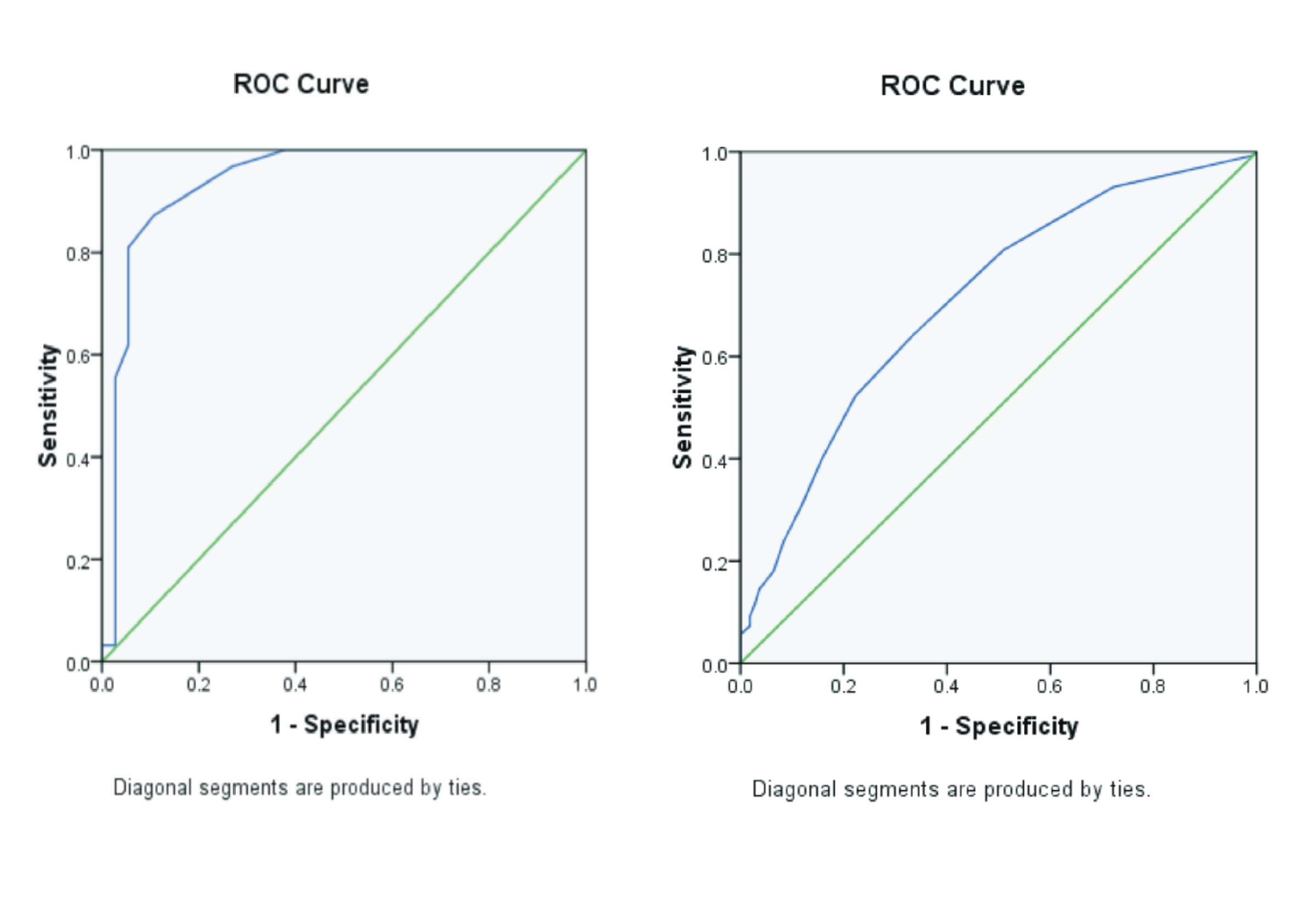ANTIBACTERIAL, ANTIOXIDANT, AND PHYTOCHEMICAL PROPERTIES OF BRYOPHYLLUM PINNATUM (LAM.) LEAF EXTRACTS AGAINST PATHOGENIC BACTERIA

Background: Bryophyllum pinnatum (Lam.) (Family: Crassulaceae), also known as Kalanchoe pinnatum, is a perennial herb, 3 to 5 meters tall, with opposed glabrous leaves. It is used to treat various illnesses due to its many health benefits. Purpose: This study aims to investigate the biological importance of B. pinnatum leaf extracts against some pathogenic bacteria. Method: Freshly harvested leaves of B. pinnatum were collected, air-dried, pulverized to powder and stored in air-tight containers using standard methods. Extracts were obtained from the powder using ethanol, ethyl acetate and distilled water. Pathogenic bacterial isolates were collected and their identity were confirmed using colonial and biochemical tests. The extracts were screened for antibacterial, antioxidant and phytochemical potentials using standard methods. Result: The highest percentage yield was obtained with the ethanol extract (12.2%) of B. pinnatum and the lowest yield (5.3 %) was obtained with the ethyl acetate extract. The ethanol extract was effective against eight (8) out of the thirteen test isolates, while the aqueous extract had the lowest activity and was effective against only two bacteria (Pseudomonas aeruginosa and Haemophillus influenzae). The lowest MIC observed with the three extracts is 25 mg/ml. B. pinnatum leaf extracts possess high antioxidant properties that are concentration dependent. The phytochemical constituents that were recorded in this study include saponins, terpenoids, steroids, tannins and glycosides. Steroid was present in only the ethanol extract but absent in the other two. Conclusion: B. pinnatum leaves have antibacterial, antioxidant and phytochemical properties and could be further utilized to manage bacterial infections.
Introduction
A rapidly-growing global health challenge is the loss of potency of conventional drugs that were once known to treat certain diseases effectively. This loss of potency is very common with antibacterial drugs or antibiotics, mainly because of the resistance of many bacteria to these drugs. The World Health Organization (WHO) has described it as the most urgent problem medical science faces. The existence of resistant microorganisms to antibiotics, which has also led to the presence of resistant genes in the environment is mainly attributed to the misuse of antibiotics and the various methods for adaptation utilized by these microorganisms(Huang et al., 2016). In developing countries, other problems associated with the use of conventional drugs in addition to antibiotic resistance are high cost, inaccessibility, and the side effects associated with the use of these drugs. These have made it necessary to search for new organic compounds that have antibacterial and antioxidant properties in order to potentially find raw materials for the semi-synthesis of new drugs.
Fortunately, the discovery and utilization of medicinal plants brought significant relief to the world for managing and controlling various diseases. A medicinal plant is simply defined as a plant in which one or more of its parts contain certain compounds that have the potential to be used in the manufacture of drugs or in new drug design(Mani, 2016). These compounds are referred to as secondary metabolites or phytochemicals, and they include terpenes, alkaloids, flavonoids, bioflavonoids, benzophenones, xanthones, tannins, saponins, cyanates, oxalate, anthraquinones, and phenylpropanoids(Daniel et al., 2020),(Sanchita & A., 2018). Some medicinal plants contain phenolic compounds, which possess antioxidant properties and may be essential to protecting cells against oxidative damage caused by free radicals(Daniel et al., 2020). They also serve as ion chelators and reduce agents.
According to a statement from the WHO, 80% of the developing world depends on medicinal plants(Khan et al., 2019). The numerous advantages that medicinal plants have over conventional drugs have contributed immensely to the continuous search for new ones as well as further exploration of other unknown potentials of those that have already been used. These advantages mainly include structural diversity(Harvey et al., 2015)and unique mechanisms of action(Lewis, 2020), among others. Several reports have shown that extracts from medicinal plants possess antimicrobial, anti-inflammatory, and antioxidant properties. According to(Porras et al., 2021), approximately183 plant-based natural products, which serve as a potential source of antibacterial lead compounds and can be used as substitutes for synthetic drugs in the recent antibiotic resistance era, have been analyzed. A very good example of such a medicinal plant isBryophyllum pinnatum(Lam.).
Bryophyllum pinnatum(Crussulaceae) is a succulent glabrous herb that is 0.3 – 1.2 m tall(Azuonwu, 2018). It is native to Madagascar and Southern Africa and grows mainly in the tropics(Nagaratna & P.L., 2015).B. pinnatumis commonly called an air plant, a life plant, a love plant, or a miracle leaf. In Nigeria, it is known as ‘odaa opue’ by the Igbo people and ‘ewe abamoda’ or ‘odundun’ by the Yorubas(Oladejo et al., 2021).B. pinnatumleaves are used to treat respiratory tract infections and many other bacterial infections. As a plant that is easy to cultivate and has also been utilized traditionally for the treatment of various illnesses,B. pinnatumleaves extracts could possess various bioactive compounds that can serve as good alternative to antibiotics in order to combat the global challenge of antibiotic resistance. This research investigates the bioactive compounds in extracts ofB.pinnatumleaves which contributes to their antibacterial and antioxidant potentials.
Material and Method
Collection of bacterial isolates
The bacterial isolates used in this study were obtained from the culture collection unit of the Department of Microbiology Research Laboratory, Federal University of Technology, Akure (FUTA). The isolates includedStaphylococcus aureus(2),Streptococcus pneumoniae(2),Streptococcus pyogenes(2),Pseudomonas aeruginosa(2),Haemophillus influenzae(2),Klebsiella pneumoniae(2) andEscherichia coli(1). Colonial, morphological and biochemical tests were used for the identification of bacterial isolates.
Collection of plant samples
FreshB. pinnatumleaves were obtained from adult plant specimens in residences in Ado-Ekiti, Ekiti State, Ilara - Mokin, Ondo State and Ilesa, Osun state, Nigeria. The plant materials were identified and authenticated at the Department of Crop, Soil and Pest Management, Federal University of Technology, Akure, Nigeria with voucher number FUTA 0377. The plants were washed with clean running tap water, air-dried at 25 0C, pulverized into powder using an electric blender and stored in air-tight containers.
Preparation ofBryophyllum pinnatumleaves extracts
Extracts fromB. pinnatumleaves were obtained according to the methods of(Adeleke et al., 2007)with ethanol, distilled water and ethyl acetate. One hundred grams of the powdered leaves were steeped in 1 L of each of the three solvents for 72 hours with regular agitation. The extracts obtained were sterilized using a syringe filter with a pore size of 0.22 μm and preserved in sterile air-tight containers at 4 0C for further use. The recovery rate of extracts was calculated using Formula 1.
\( \documentclass{article} \usepackage{amsmath} \begin{document} \displaystyle \text{Percentage recovery/yield of extract} = \frac{\text{Weight of extract recovered after extraction}}{\text{Initial weight of plant before extraction}} \times \frac{100}{1} \quad (1) \end{document} \)
Standardization of inoculum and antibacterial assay of the extracts
The bacterial isolates were standardized according to the method
Abubakar, Misau, M.S., G, L.B., 2017. Percentage Yield and Acute Toxicity of the Plant Extracts of Ceiba pentandra Grown in Bauchi State, North Eastern Nigeria. Journal of Pharmacognosy and Phytochemistry Vol. 6(5), Pp. 1777-1779.
Adeleke, O.E., Ojo, O.P., Idowu, P.A., 2007. Antibacterial Efficacy of Garcinia kola (Heckel) Seeds against Bacteria Involved in Throat Infections. African Journal of Clinical and Experimental Microbiology Vol. 8(1), Pp. 68-76.
Ajuru, M.G., Ofa, F.W.N., Oghenerukevwe, D., 2018. Qualitative and Quantitative Phytochemical Screening of Some Species of Lamiaceae in Rivers State, Nigeria. Research Journal of Food and Nutrition Vol. 2(1), Pp. 28-37.
Azuonwu, O., 2018. Antimicrobial Activity of Leave Extracts of Bryophyllum pinnatum and Aspilia africana on Pathogenic Wound Isolates Recovered from Patients Admitted in University of Port Harcourt Teaching Hospital, Nigeria. Annals of Clinical and Laboratory Research Vol. 5(3), Pp. 185.
Bosso, S., Innalegwu, D., 2018. Phytochemical and Antibacterial Activity of Methanol Extract of Garcinia kola Against Selected Bacteria Isolate. In: Medicine, Environmental Science, Biology.
Daniel, Imaobong E., Akpan, E.I., Utam, E.C., 2020. Phytochemical Evaluation, Antioxidant and Antimicrobial Activities of Various Extracts from Leaves and Stems of Bryophyllum pinnatum. Nepal Journal of Biotechnology Vol. 8(1), Pp. 17-28.
Harvey, A.L., Edrada-Ebel, R., Quinn, R.J., 2015. The Re-Emergence of Natural Products for Drug Discovery in The Genomics Era. Nature Reviews. Drug Discovery Vol. 14(2), Pp. 111-129.
Huang, T., Zheng, Y., Yan, Y., Yang, L., Yao, Y., Zheng, J., Wu, L., Wang, X., Chen, Y., Xing, J., Yan, X., 2016. Probing Minority Population of Antibiotic-Resistant Bacteria. Biosensors and Bioelectronics Vol. 80, Pp. 323-330.
Ikechukwu, G.C., Alozie V. C., Ikechukwu G. C, Nwokeocha O. W., 2017. Effect of Extraction Solvents on Bioactive Compounds and Antimicrobial Activitiesof Two Varieties of Garcinia kola (Heckel) OBOWO 02 (Soft and Less Bitter) and OBOWO 03 (Hard and Very Bitter). UK Journal of Pharmaceutical and Biosciences Vol. 5(6), Pp. 20-25.
Izunwanne, U., Ahuchaogu, A., Amanze, K., Chemistry, C., Education, A., Owerri, Pure, N., Chemistry, I., University, A., Uturu, Nigeria, 2017. Chemical Constituents Analysis of the Leaves of Bryophyllum pinnatum by GC-MS. AASCIT Journal of Chemistry Vol. 3(3), Pp. 19-22.
Jahangeer, M., Fatima, R., Ashiq, M., Basharat, A., Qamar, S.A., Bilal, M., Iqbal, H.M.N., 2021. Therapeutic and Biomedical Potentialities of Terpenoids – A Review. Journal of Pure and Applied Microbiology Vol. 15(2), Pp. 471-483.
Jovanović-Šanta, S.S., Petri, E.T., Klisurić, O.R., Szécsi, M., Kovačević, R., Petrović, J.A., 2015. Antihormonal Potential of Selected D-homo and D-seco Estratriene Derivatives. Steroids Vol. 97, Pp. 45-53.
Khan, M.S.A., Ahmad, I., Chattopadhyay, D., 2019. New Look to Phytomedicine, 1 st Edition. ed. Elseiver Academic Press.
Kirmani, F., Saddiqe, Z., Saleem, S., Ali, F., Haq, F., 2024. Phytochemical Investigation and Antibacterial Activity of Curcuma longa against Multi-Drug Resistant Bacteria. South African Journal of Botany Vol. 164, Pp. 137-145.
Lawan, I., Ahmad, S., Sulaiman, M., Ali, M.A., 2023. Determination of Phytochemical Components and The Antimicrobial Potency of Bryophyllum pinnatum Leaf Extracts against Some Clinical Bacteria and Fungi Isolates. European Academic Research Vol. 10(12), Pp. 4190-4199.
Lewis, K., 2020. The Science of Antibiotic Discovery. Cell Vol. 181(1), Pp. 29-45.
Lopez, L.M., Grimes, D.A., Schulz, K.F., Curtis, K.M., 2011. Steroidal Contraceptives: Effect on Bone Fractures in Women. Cochrane Database Syst Rev Vol. 6(7), Pp. CD006033.
Mani, S., 2016. Importance and Uses of Medicinal Plants–An Overview. International Journal of Preclinical & Pharmaceutical Research Vol. 7(2), Pp. 67.
Mbaveng, A.T., Ndontsa, B.L., Kuete, V., Nguekeu, Y.M.M., Çelik, İ., Mbouangouere, R., Tane, P., Efferth, T., 2018. A Naturally Occuring Triterpene Saponin Ardisiacrispin B Displayed Cytotoxic Effects in Multi-Factorial Drug Resistant Cancer Cells via Ferroptotic and Apoptotic Cell Death. Phytomedicine: International Journal of Phytotherapy and Phytopharmacology Vol. 43, Pp. 78-85.
Nagaratna, Hegde, P.L., 2015. A Comprehensive Review on Parnabeeja [Bryophyllum pinnatum (Lam.) Oken]. Journal of Medicinal Plants Studies Vol. 3(5), Pp. 166-171.
Nawaz, H., Shad, M., Rehman, N., Andaleeb, H., Ullah, N., 2020. Effect of Solvent Polarity on Extraction Yield and Antioxidant Properties of Phytochemicals from Bean (Phaseolus vulgaris) Seeds. Brazilian Journal of Pharmaceutical Sciences Vol. 56(3), Pp. 1-9.
Nguyen, L., Fărcaş, A., Socaci, S., Tofana, M., Diaconeasa, Z., Pop, O.L., Salanță, L., 2020. An Overview of Saponins -A Bioactive Group. Bulletin of University of Agricultural Sciences and Veterinary Medicine Cluj-Napoca. Food Science and Technology Vol. 77(1), Pp. 25-36.
Oladejo, A.A., Ikechuckwu, O.E., Aritetsoma, O.H., Samuel, O.C., Uche, O.C., 2021. Inhibitory Effects of Bryophyllum pinnatum Leaf Extract on Inflammatory Biomarkers. Journal of Advances in Medical and Pharmaceutical Sciences Vol. 23(2), Pp. 7-13.
Onoja, S.O., Ihejirika, G.Q., Nwankudu, O.N., Omeh, Y.N., Ezeja, M.I., 2018. Antidiarrheal and Antioxidant Activities of Methanol Extract of Bryophyllum pinnatum Leaf Harvested from South-Eastern Nigeria in Mice. Journal of Pharmaceutics Vol. 2018(1), Pp. 6810620.
Oseni, A., Olusola-makinde, O., Oladunmoye, M.K., 2021. Structural elucidation, Mechanism of Action, Antibacterial Proficiency and Synergistic Forte of Purified Euphorbia Hirta Whole Plant Extract Against Multi-Drug Resistant Otitis Media Infection. Boletin Latinoamericano y del Caribe de Plantas Medicinales y Aromaticas Vol. 20(6), Pp. 575-597.
Oyeniran, O.H., Ademiluyi, A.O., Oboh, G., 2021. Comparative Study of The Phenolic Profile, Antioxidant Properties, and Inhibitory Effects of Moringa (Moringa oleifera Lam.) and Almond (Terminalia catappa Linn.) Leaves on Acetylcholinesterase and Monoamine Oxidase Activities in The Head Region of Fruitfly (Drosophila melanogaster Meigen) in Vitro. Journal of Food Biochemistry Vol. 45(3), Pp. e13401.
Porras, G., Chassagne, F., Lyles, J.T., Marquez, L., Dettweiler, M., Salam, A.M., Samarakoon, T., Shabih, S., Farrokhi, D.R., Quave, C.L., 2021. Ethnobotany and the Role of Plant Natural Products in Antibiotic Drug Discovery. Chemical Reviews Vol. 121(6), Pp. 3495-3560.
Saleri, F.D., Chen, G., Li, X., Guo, M., 2017. Comparative Analysis of Saponins from Different Phytolaccaceae Species and Their Antiproliferative Activities. Molecules (Basel, Switzerland) Vol. 22(7), Pp. 1077.
Sanchita, Sharma, A., 2018. Chapter 23 - Gene Expression Analysis in Medicinal Plants Under Abiotic Stress Conditions. In: Plant Metabolites and Regulation Under Environmental Stress. Academic Press, Pp. 407-414.
Smeriglio, A., Barreca, D., Bellocco, E., Trombetta, D., 2017. Proanthocyanidins and Hydrolysable Tannins: Occurrence, Dietary Intake and pharmacological Effects. British Journal of Pharmacology Vol. 174(11), Pp. 1244-1262.
Thao, N.P., Luyen, B.T.T., Kim, E.J., Kang, J.I., Kang, H.K., Cuong, N.X., Nam, N.H., Kiem, P.V., Minh, C.V., Kim, Y.H., 2015. Steroidal Constituents from the Edible Sea Urchin Diadema Savignyi Michelin Induce Apoptosis in Human Cancer Cells. Journal of Medicinal Food Vol. 18(1), Pp. 45-53.
Yildirım, I., Kutlu, T., 2015. Anticancer Agents: Saponin and Tannin. International Journal of Biological Chemistry Vol. 9(6), Pp. 332-340.
Zhang, Y.-Q., Zhang, M., Wang, Z.-L., Qiao, X., Ye, M., 2022. Advances in Plant-Derived C-Glycosides: Phytochemistry, Bioactivities, and Biotechnological Production. Biotechnology Advances. Biotechnology Advances Vol. 60, Pp. 108030.
Copyright (c) 2025 Journal of Vocational Health Studies

This work is licensed under a Creative Commons Attribution-NonCommercial-ShareAlike 4.0 International License.
- The authors agree to transfer the transfer copyright of the article to the Journal of Vocational Health Studies (JVHS) effective if and when the paper is accepted for publication.
- Legal formal aspect of journal publication accessibility refers to Creative Commons Attribution-NonCommercial-ShareAlike (CC BY-NC-SA), implies that publication can be used for non-commercial purposes in its original form.
- Every publications (printed/electronic) are open access for educational purposes, research, and library. Other that the aims mentioned above, editorial board is not responsible for copyright violation.
Journal of Vocational Health Studies is licensed under a Creative Commons Attribution-NonCommercial-ShareAlike 4.0 International License














































